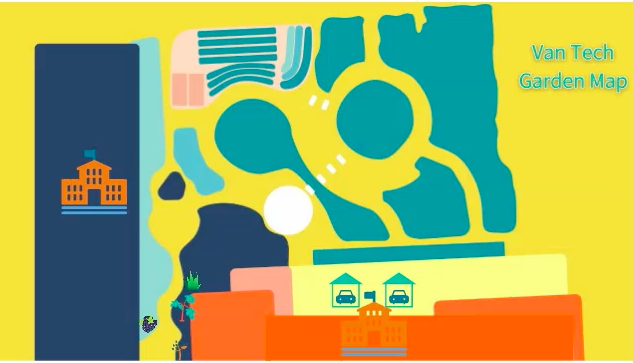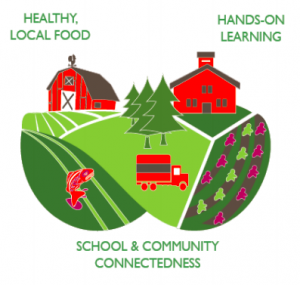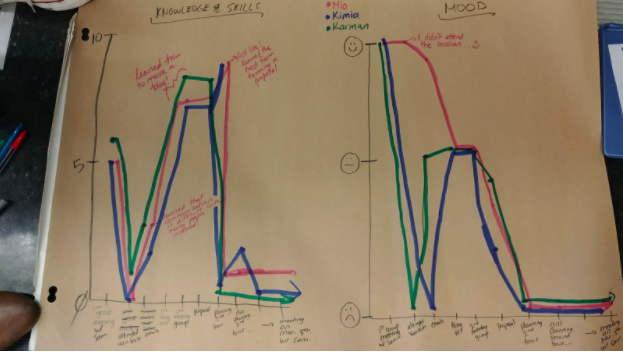Heeyy…Welcome Back
LFS 350; Tour with Lori (VanTech)

Strategies for a Graceful Dismount
Articulate your Weekly Objectives and Achievements
OBJECTIVES |
DATES |
| After presenting and discussing with other groups for F2S, we will think over any suggestions that we can make with our draft report. | March 5th |
| Stay in contact with our group members via google docs and facebook to communicate any suggestions and changes to be made on our draft report. | March 7th |
| Distribute the work for the final infographic, report, and presentation | March 9th |
| Dissect audio recording and consider how it can be incorporated into our report | March 9th |
| Ongoing Objective:Keep in constant contact with one another through Facebook and email, at least twice this week. Reply to Sam Gambling and Lori Snyder in a timely and respectful manner. Doing so, would allow our group, as whole, to progress as a unified unit. | Ongoing |
Achievements
- Complete final tour with Lori at Vantech School
- Collected notes, pictures, and audio recordings of the tour
- Compile a draft multimedia report of the plants and current assets
- Create a draft interactive map for the presentation with other F2S groups
- Attend a meeting with Lori, Sam, and other F2S group members to present our draft models of the multimedia report.
Describe and reflect on your group’s Moment of Significant Change workshop from tutorial session
What
In our last tutorial we discussed how we were feeling regarding the project, and we took a moment to think about the knowledge and skills that we feel we have gained so far by working on this project. As you can see in the image posted below, we all followed a similar trend. For our knowledge and skills gained, we all similarly felt as though we gained quite a bit of knowledge from our first meeting with Sam and Lori. There was a deep discussion about what it means to build Foodscapes for students and how it impacts their understanding of the role food plays in their lives. It was an exciting time for us to begin this new adventure so our feelings were on the very high end as well. However we all experienced a dramatic dip as our initial tour of AR Lord elementary school fell through. There were multiple communication errors and we experienced difficulty finding a time that worked for our group to attend a tour as we are all busy student’s. This pitfall was our moment of significant change.
So What
To build a foodscape is to build a new sense of community, a space where students can learn the importance of nutritious, healthy food, how it’s grown, connect with the land and learn of indigenous roots and traditional practices. Discussing how to build such a foodscape with Lori, Sam, the teachers, the dieticians and other involved in the project was one of the highlights in the project thus far. This experience encompassed the teaching of asset based community development, and is teaching us the multi-components involved in working towards food sovereignty and food justice. During this project we learn and build upon the tools and skills we need to assess the economic, ecological, social and technological components of agrifood systems, or as in our case specifically an Indigenous food scape.
Hiccups are normal, especially when working on such a large project with several people involved. It allowed us to grow and learn about how we should react in these professional situations. For our group dealing with time conflicts proved to be one of the most challenging obstacles. Communicating with Sam was important in order to try resolving time conflicts, however finding a tour schedule which worked for our group members still proved to be difficult; which is understandable considering many members schedules needed to align including the teachers, Lori’s as well as our group members. Having this real-world, hands-on experience of time conflicts and miscommunications taught us that no amount of planning will always yield a perfect execution of any project. We learned how to prioritize this project by communicating amongst ourselves, changing our schedules around to find a time for the tour. Understanding that it is sometimes necessary to do so when conflict arises.
Now What
 While many consumers and alternative agrifood organizations express interest in and support social justice goals, the incorporation of these goals into on-the-ground alternatives is often tenuous. Academics have an important role in calling out social justice issues and developing the critical thinking skills that can redress inequality in the agrifood system(Allen.P). Now that we have actually been to the school’s, and experience being part of a large project, we can see the bigger picture of how we are actually contributing to this project, and it helps keep us optimistic about the future. The thought that students of the schools we visited will soon enough have their own garden and educational workshops about growing food, learning about native plants and the connections indigenous communities have with the land helps give us perspective and keeps us motivated to continue giving our best efforts into this project as it will aid in teaching students about food sovereignty, security and justice.
While many consumers and alternative agrifood organizations express interest in and support social justice goals, the incorporation of these goals into on-the-ground alternatives is often tenuous. Academics have an important role in calling out social justice issues and developing the critical thinking skills that can redress inequality in the agrifood system(Allen.P). Now that we have actually been to the school’s, and experience being part of a large project, we can see the bigger picture of how we are actually contributing to this project, and it helps keep us optimistic about the future. The thought that students of the schools we visited will soon enough have their own garden and educational workshops about growing food, learning about native plants and the connections indigenous communities have with the land helps give us perspective and keeps us motivated to continue giving our best efforts into this project as it will aid in teaching students about food sovereignty, security and justice.
Describe your groups strategy for successful project completion (the Graceful Dismount).
- Stay in constant contact with our group members, our TA, and Sam
- Distribute the tasks evenly between all group members
- Be responsible for working on our individual sections and completing them on time
- Follow through as a group to our weekly objectives and be aware of the due dates we have created for ourselves
References:
Allen, P. (2008). Mining for justice in the food system: perceptions, practices, and possibilities. Agriculture and Human Values, 25(2), 157–161.

